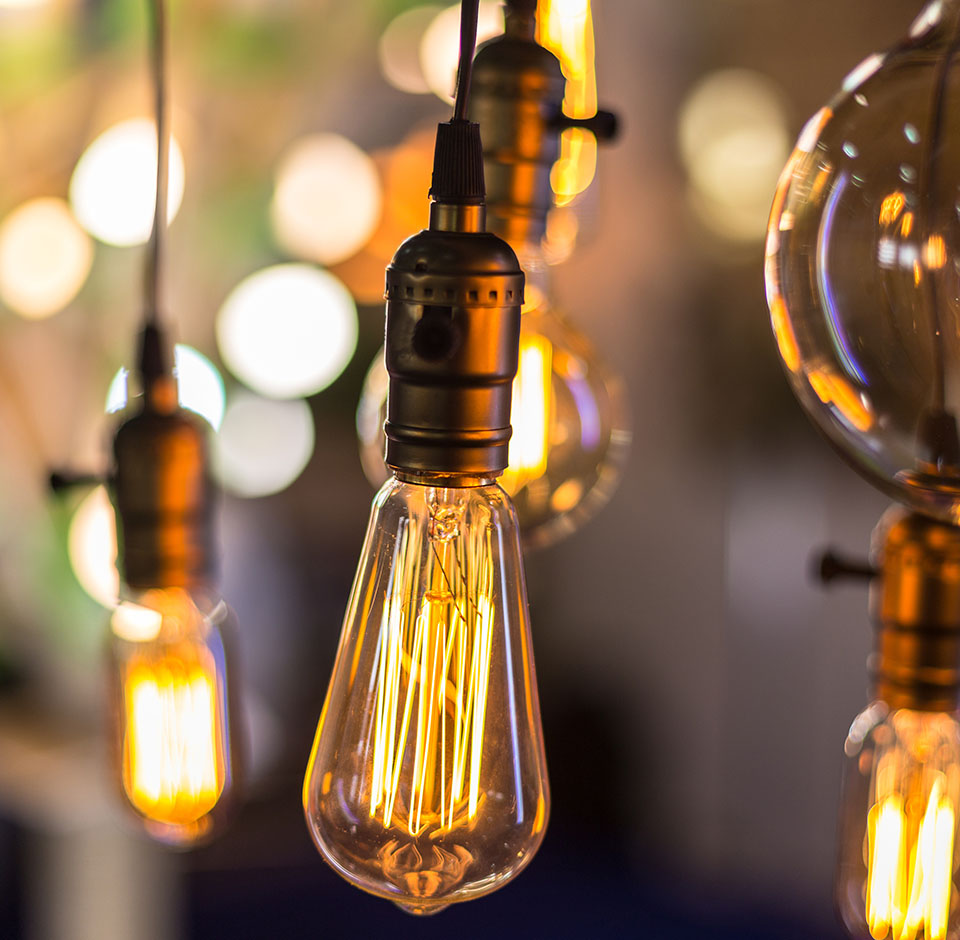LED Fitting Types Explained
If you’re thinking of replacing your old, traditional light bulbs with some up-to-date, energy-efficient LED light bulbs, you’re going to need to know that you’re buying the right bulbs for your particular light fittings. This can sometimes be tricky, luckily we are here to explain to you what the most common fittings are for different lamp types.
The part of a light bulb that connects to the light fitting is known as the “cap” or “fitting”. This provides the electrical connection and a secure fixing for the bulb. It also makes it easy to replace the bulb, great for when you want to switch from your existing bulbs to low energy, high quality LEDs.
Bulbs
Bayonet Cap
With its familiar “push and twist” action, the bayonet cap is one of the most common type of fitting and is found in the shade hanging from the ceiling. The bulbs can also look like vintage-style filaments.
Bayonet caps come in two sizes. There’s the B22 which has a diameter of 22mm, and then there’s the smaller B15 with a 15mm diameter.
Edison Screw
Named after the pioneering inventor Thomas Edison, the Edison Screw is a type commonly found on light bulbs that screw into a fitting – usually found in decorative floor or table lamps.
Edison Screw bulbs come in two sizes, E27 and E14, ES fittings come in two common sizes. The E27 has a diameter of 27mm, while the smaller E14 is 14mm in diameter.
Capsules
Capsules are the type of fitting you will find in decorative lamps – they will have two metal pins that you push into a fixture. Capsules come in two sizes, G9 and G4. The G in G9 and G4 refers to the fact these have pins, and the 9 and 4 stands for the distance between the pins – 9mm or 4mm.
Spotlights
GU10
GU10 is a common spotlight fitting that connects through twin pins, which use a push and twist mechanism to fit into a fixture. The 10 in GU10 refers to the distance in mm between the two prongs. GU10s are usually used in the kitchen, lounge, or bathroom.
MR11 (GU4)
MR11 is a type of spotlight fitting with two thin metal prongs which are pushed into a fixture. Uncommonly referred to as GU4s, the 4 in GU4 refers to the distance in mm between the two prongs.
You could find these in your bathroom or kitchen, because they are low voltage. As these type of areas can be wet or humid, it is safer to have a light which is lower voltage in case of any faults.
MR16 (GU5.3)
MR16 is a common spotlight fitting with two thin metal prongs which are pushed into a fixture. Uncommonly referred to as GU5.3s, the 5.3 refers to the distance in mm between the two prongs. This type of light is bigger than a MR11, but still low voltage and therefore most likely to be used in your kitchen or bathroom.
Downlight
Downlights are enclosed units which combine a fixture housing and a light source all in one, so that’s the metal or plastic surround you see on the ceiling, the spotlight and the casing within the ceiling. You can buy downlights that contain any type of spotlight.
Downlights provide a modern element to light your home compared to the traditional lighting fixtures. The most common installation areas include kitchens, living rooms and bathrooms.
2D replacements or bulkheads
You may hear these terms when someone is referring to outside or bathroom lighting. In technical terms, 2D is the actual lamp itself and the bulkhead is the fitting this goes into but the two terms are both commonly used.
Now that you know what fitting type you need for your lighting, why not browse our LED range by fitting type.
